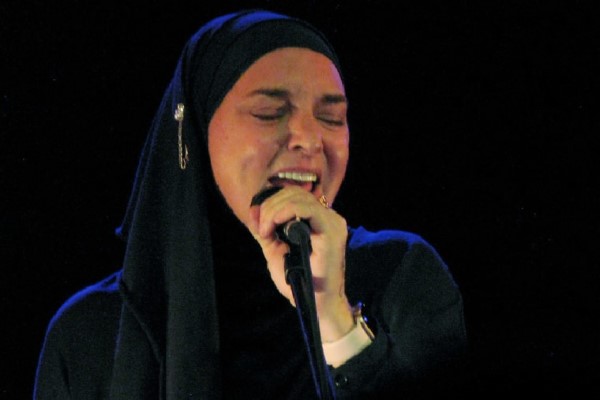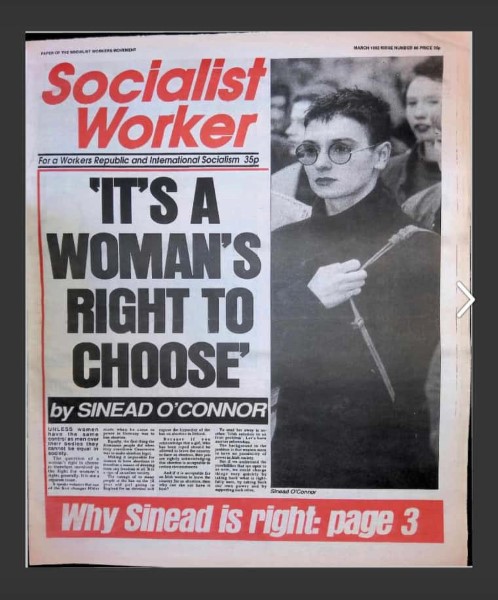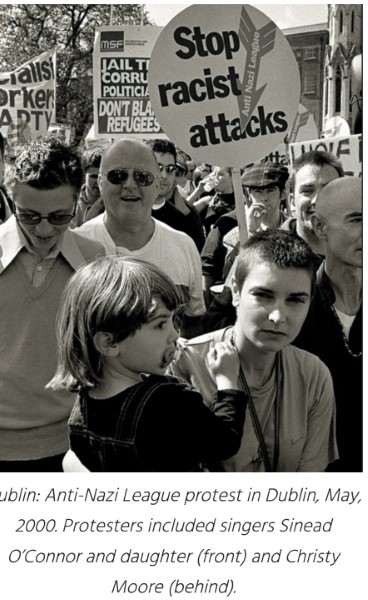
|
*-*-*-*-*-*-*-*-*- Sinéad O’Connor, 1966-2023 Nothing compares to the hypocrisy of the press. The death of Irish singer Sinéad O’Connor was greeted with an outpouring of heartfelt tributes and bullshit. The Sun pronounced “Legend Lost” on its front page. True enough. But the paper that denounced and mocked her for decades forgot it had called her “crazy” and “Sinéad O’Controversy”. It forgot to mention its outrage when she declared, “People like Thatcher and Ian Paisley should be shot,” or that Saddam Hussein was no worse than George Bush.
When recording her first album, a record executive told her to grow her hair out and start dressing like a girl with short skirts. The next day she turned up with her head shaven. Later in life, she said, “The industry has managed to completely pervert the idea of female liberation. They’re giving little girls the idea that all they are worth is how they look.”Her album The Lion and the Cobra, released in 1987, was glorious. But it was her second album, I Do Not Want What I Haven’t Got, released in 1990, that shot her to global fame. It won four Grammy nominations, but she boycotted the ceremony and refused the award. The lead single was a cover of a little-known Prince song Nothing Compares 2 U. Her moment came when she tore up a picture of the Pope in 1992 on US television. It was a protest against child sexual abuse within the Irish Catholic Church and to highlight that the establishment was refusing to face up to it. It led not only to death threats but hounding by the media. Many said it ruined her career, but she saw it differently. “I feel that having a No 1 record derailed my career,” she wrote, “and my tearing the photo put me back on the right track.” It took everyone else a while to catch up. Her life echoes what she called “the story of Ireland” in her memoirs. A move away from theocracy, the reckoning with child abuse, the growing awareness of mental distress. Earlier in 1992 she had marched more than once with thousands of others in a rebellion over the X-case in Ireland. A 14 year old rape victim was stopped from travelling to England for an abortion. It set off a series of protests that marked a sea change in Irish politics.
At one point she marched into the parliament and demanded to see the
government. She wrote the front page of the March 1992 Irish Socialist
Worker under the headline, “It’s a woman’s right to choose.”
She was not a waif caught in a storm. When protesters hired a steamroller to crush piles of her albums, she donned a wig and sunglasses and joined them. She gave an interview in which she claimed to have come to add her patriotic voice to the protest. As she left America she donated the house that she had bought in the Hollywood Hills to the Red Cross and asked that the money go to children in Somalia. She became a priest. She looked to paganism, Rastafarianism and Buddhism and in 2018 converted to Islam. Her voice could break rocks and make saints cry. There are few if any who could mix a James Brown sample to an old Irish poem or pair the ghosts of traditional Irish singing with a reggae rhythm.
In her last public appearance she dedicated the award she was receiving to all refugees. Her openness about her distress occasionally provided yet more voyeurism for the media, but mostly it showed immense honesty. As she typed in the comments of her own interview in the New York Times two years ago, “It is no measure of health to be well-adjusted to a profoundly sick society”. Simon Basketter, originally printed in https://socialistworker.co.uk
|


